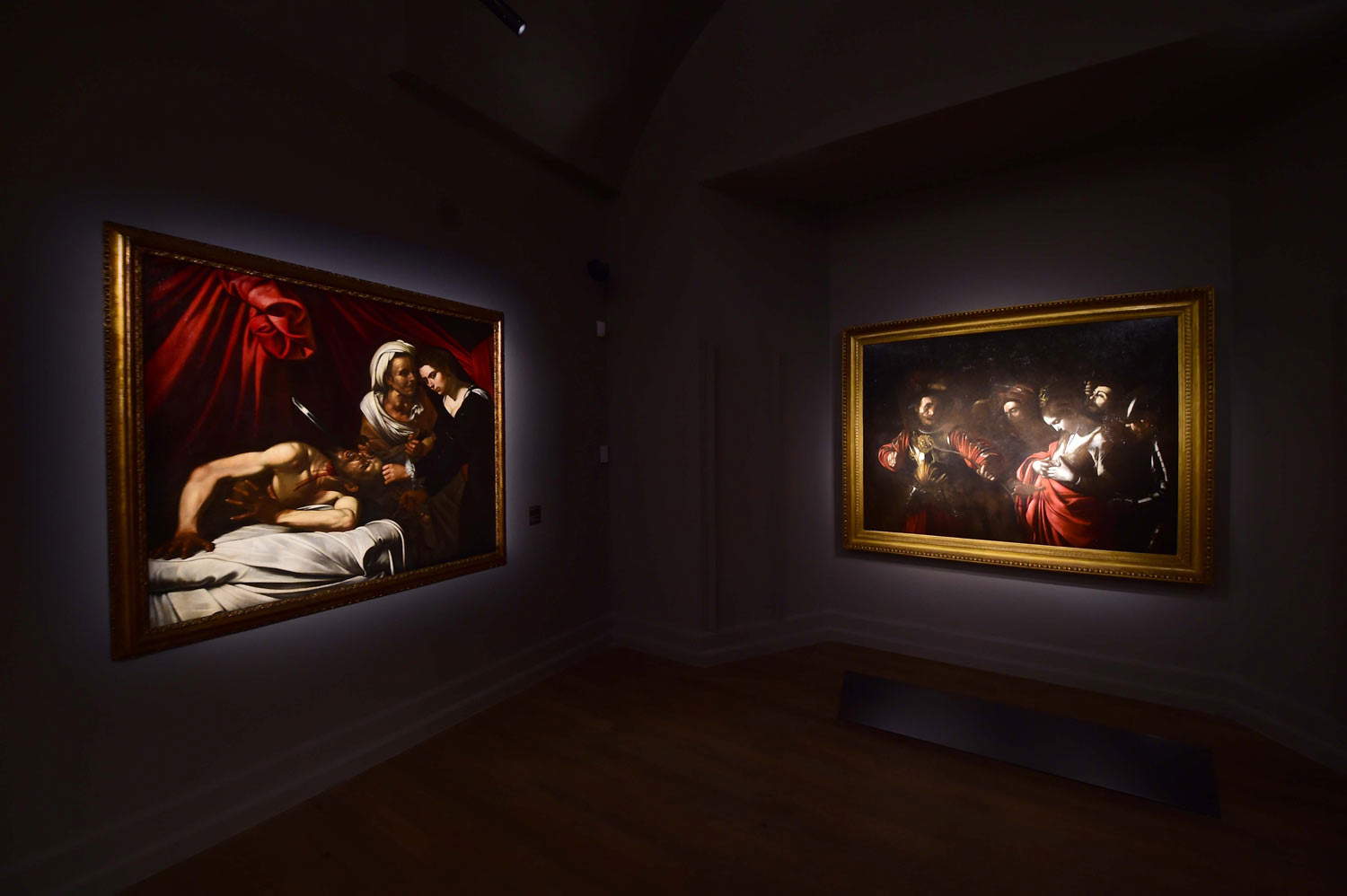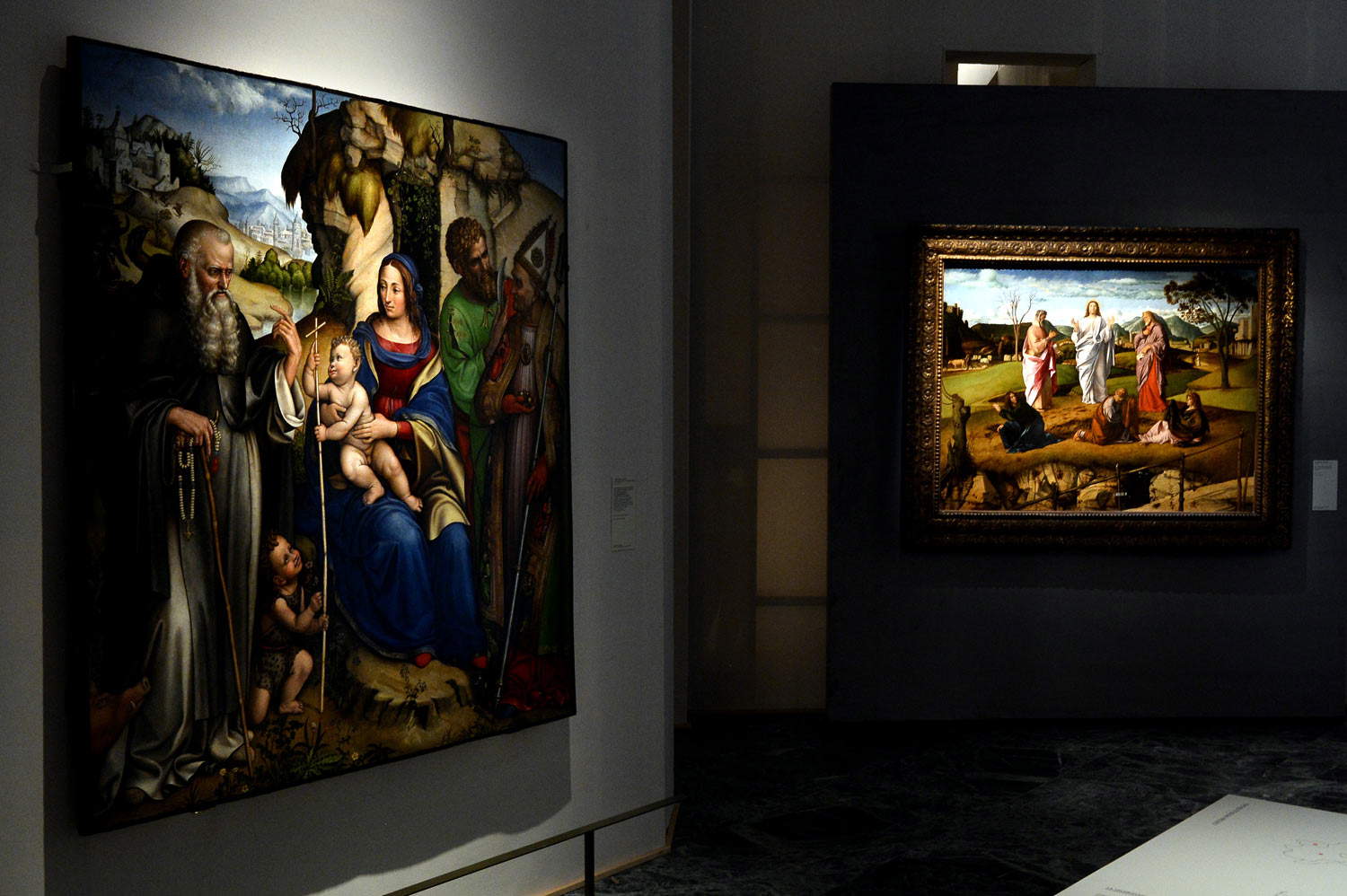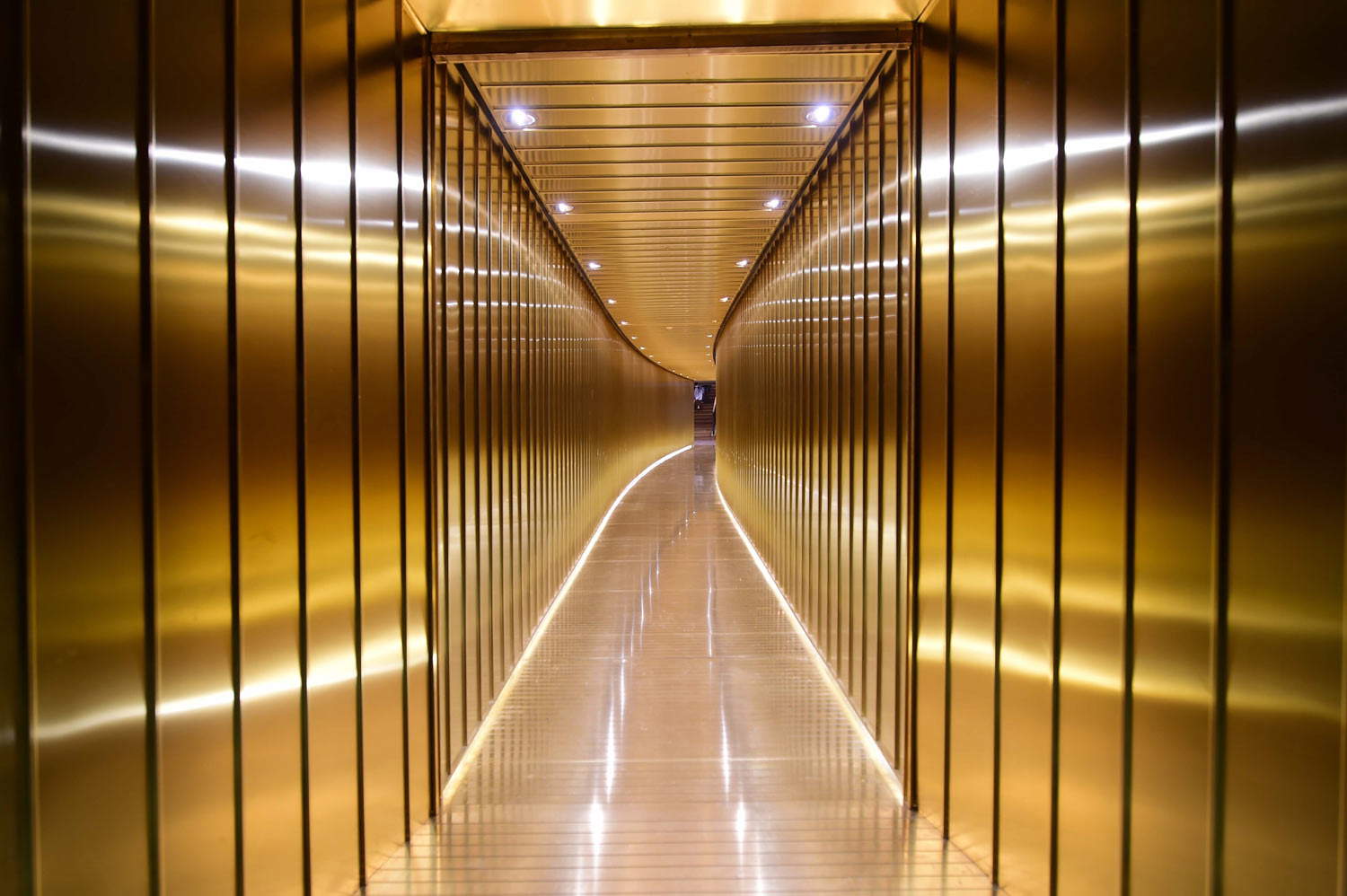The inauguration of the new headquarters of the Gallerie d’Italia in Naples was an opportunity for Intesa Sanpaolo to take stock of their action in the cultural sphere and their relationship with the city. But it was also a great challenge: that of not making the previous headquarters in Palazzo Zevallos Stigliano, on the same street, via Toledo, but a few blocks before. While the previous location was a landmark for culture in Naples, just think of the many cultural activities undertaken by the museum, such as concerts open to the public during lunchtime, the structure itself was of strong interese also with an important banking history behind it, Cosimo Fanzago ’s 17th-century building featured numerous 1920s interventions with floral decorations of the Neapolitan belle époque, such as the huge polychrome stained-glass window in the central hall.
The challenge then is also to enthusiastically bring the public closer to the new headquarters, the former headquarters of the Banco di Napoli, an institution later incorporated into what is now the Intesa Sanpaolo group. It was designed by architect Marcello Piacentini in the Fascist period, between 1939 and 1940, a period that changed the physiognomy of that area, with other buildings from the same years, such as the headquarters of the central post office and the police headquarters. Palazzo Piacentini is a building with certainly an important history, but it was perhaps perceived as cold and distant from citizens, as the location of the bank offices. However, there is no doubt about the charm of these places, which is also strong on the aesthetic level of a careful choice of materials: from the gray stone and travertine of the facade to the use of gilded metal. Especially impressive are the large colored marbles used in the interiors, especially in the great Assembly Hall and the monumental staircase, with its green marbles and historiated stained glass windows by Luigi Parisio.














Compared to the previous location, the exhibition space of the Gallerie d’Italia in Naples has tripled to a total of about five thousand works and a substantial increase in the number of artworks on display to the public. The new museum is located just a stone’s throw from the UNESCO Historic Center of Naples, on one of the most tourist-friendly streets, surrounded on one side by Piazza del Plebiscito and the San Carlo theater, and on the other by the Quartieri Spagnoli and the recent art stations of the Metropolitan Railway.
The museum is divided into three routes. The first route is located on the second floor and focuses mainly on Attic and Magna Greek ceramics, which are illuminated and displayed in a very impressive way. This itinerary is curated by Fabrizio Paolucci and shows for the first time to the public the Caputi Collection, consisting of more than 500 vases dated between the fifth and third centuries before Christ.
The second sectionis located on the second floor, is curated by Fernando Mazzocca and is perhaps the centerpiece of the museum. Composed of works ranging that the early 17th century and the early 20th century, it includes such prestigious names as Artemisia Gentileschi’s Samson and Delilah, Luca Giordano’s The Rape of Helen, Battistello Caracciolo’s Holy Family, Bernardo Cavallino’s canvases, Gerrit van Honthorst’s Saint Francis, Louis Finson’s Judith Beheading Holofernes to Gaspar van Wittel, father of the famous architect Louis (Italianized by the surname of Vanvitelli) and represented in the gallery with two beautiful views: the first is a view of Piazza del Plebiscito, “largo di Palazzo” at the time, before the construction of the church of San Francesco di Paola, with the fountain of the Giant on display. The second is a view of the Chiaja district, at the time full of noble palaces surrounded by greenery. True historical documents for the precision with which they testify to a Naples that no longer exists. The tour continues chronologically, accompanying the visitor through the 19th century with works by Anton Sminck van Pitloo, Giacinto Gigante, and Domenico Morelli, until the end of the century and the beginning of the 20th century. Some works from this period, such as Francesco Paolo Diodati’s beautiful Piazza Vittoria (1893), convey to us the post-unification atmosphere, still of an extremely international modern capital, with some Parisian reflections. We end the tour with two rooms, the first dedicated partially, and the second exclusively, to Vincenzo Gemito, where drawings, terracottas and bronzes bear witness to the torment of this particular artist at the turn of the century.
The star of this section, however, and of the inner gallery, is undoubtedly Caravaggio’s work, the Martyrdom of St. Ursula, created in May 1610. The story of this work is particularly significant because, according to our current knowledge, it is his last work, created during his stay in Naples for the Genoese banker Marcantonio Doria, as a document in the family archives testifies. The choice of subject was probably related to the family itself, which was very devoted to the Saint. We recall that Merisi was in Naples coming first from Malta and then from Sicily. He would then attempt to reach Rome to be pardoned by the Holy Father, Pope Paul V. It is known that unfortunately he would never get there, dying on the journey to Porto Ercole in July. This entire section of the gallery has been catchily named with the title “From Caravaggio to Gemito,” juxtaposing the two great masters, whose works, as scholar Antonio Iannuzzi explained, share the same fatalism.
The third and last section, on the second floor, is an evocative itinerary curated by Luca Massimo Barbero, composed of the great masters from theNovecento to the present day such as Lucio Fontana, Alberto Burri, Piero Manzoni, Enrico Castellani, Mario Schifano, Giulio Paolini, Alighiero Boetti, Michelangelo Pistoletto, Giosetta Fioroni, Carol Rama, Afro, Emilio Vedova, Gerhard Richter, Jannis Kounellis, Sol LeWitt, up to Andy Warhol.
In addition to these permanent sections, the viewer will be able to admire the ground-floor exhibition on the Group’s project, Restituzioni, now in its 19th edition: a two-year preservation and enhancement program that Intesa Sanpaolo conducts in collaboration with the Ministry of Culture. The exhibition juxtaposes different types of works, from Pompeian frescoes to Luigi Mainolfi ’s huge 1979 red bell.
Completing the gallery is an extremely modern and elegant bookshop, a cafeteria, a soon-to-open starred restaurant, a library and ample space for educational workshops. During the opening, Intesa Sanpaolo Chairman Gian Maria Gros-Pietro stressed the importance of the latter spaces in particular, in relation to younger visitors, but not only. In fact, the facility, said the chairman, “will have to form a model of relations between the museum and citizens based on creativity, social welfare and inclusion, highlighting the important mission that the group has towards the entire city.” And indeed, the very image of closing a bank to open a museum can now be seen as an extremely positive sign for the development and growth of a city.








Intesa Sanpaolo Group chairman emeritus Giovanni Bazoli opened the inauguration, recalling Gallerie d’Italia’s important commitment to the city, which began in 2007 with Palazzo Zevallos and the ancient roots of Banco di Napoli. Bazoli also recalled how the mission of Gallerie d’Italia in Milan and Turin, too, was to revitalize historic centers, and that is precisely why prestigious areas of the city were chosen as galleries’ headquarters.
The mayor of Naples, Gaetano Manfredi, also spoke at the inauguration, thanking Intesa Sanpaolo for the great cultural investment in the city at a particular time when investment in culture seems to be essential to the resolutions of social issues. He then recalled how the history of this building is actually much older than what most citizens imagine, because the building before being rebuilt by Piacentini was one with the building behind it, Palazzo San Giacomo, the historic seat of Naples City Hall, and previously housed the offices of the Bourbon ministries.
Michele Coppola, the director of the Galleria d’Italia, intervened to emphasize the great commitment of the group manifested also through the work on the building, which lasted only twenty-two months, in full synergy with the Superintendency, represented in the room by Superintendent Luigi La Rocca himself. At the exhibition level, the architectural redevelopment work carried out by Michele De Lucchi of AMDL Circle is undoubtedly a winning bet: without distorting the very nature of the building, the architect has created extremely usable spaces for the visitor, according to modern museographic criteria. Many of the itineraries will make the visitor feel that he or she is in one of the most modern museums in Italy, with the works beautifully displayed and illuminated. Merisi’s Martyrdom of St. Ursula is now enhanced even better than in its previous location and is in dialogue with the other works by Finson and Gentileschi, in a profound and stimulating way for the visitor. What is even more impressive, however, are the ground floor exhibition spaces, the former public reception areas and the great hall, which are distinguished by an uncommon majesty that will make the viewer feel that he or she is in a cultural space of international scope. These details truly convey the passion, the work and the very large investment, not only economic, that the group has made on the venue, focusing concretely on local cultural development.
Culture Minister Dario Franceschini closed the inauguration, highlighting the city’s role as a permanent capital of culture and experiential tourism and the fundamental commitment to succeed in not distorting the authenticity of places. He also informed that in June all European and Mediterranean Culture Ministers will meet precisely in Naples. He concluded by underlining precisely how the Intesa Sanpaolo Group, has been able to interpret the great challenges related to tourism in the city and how the group with its commitment has shown the way to many other banking institutions.
Warning: the translation into English of the original Italian article was created using automatic tools. We undertake to review all articles, but we do not guarantee the total absence of inaccuracies in the translation due to the program. You can find the original by clicking on the ITA button. If you find any mistake,please contact us.